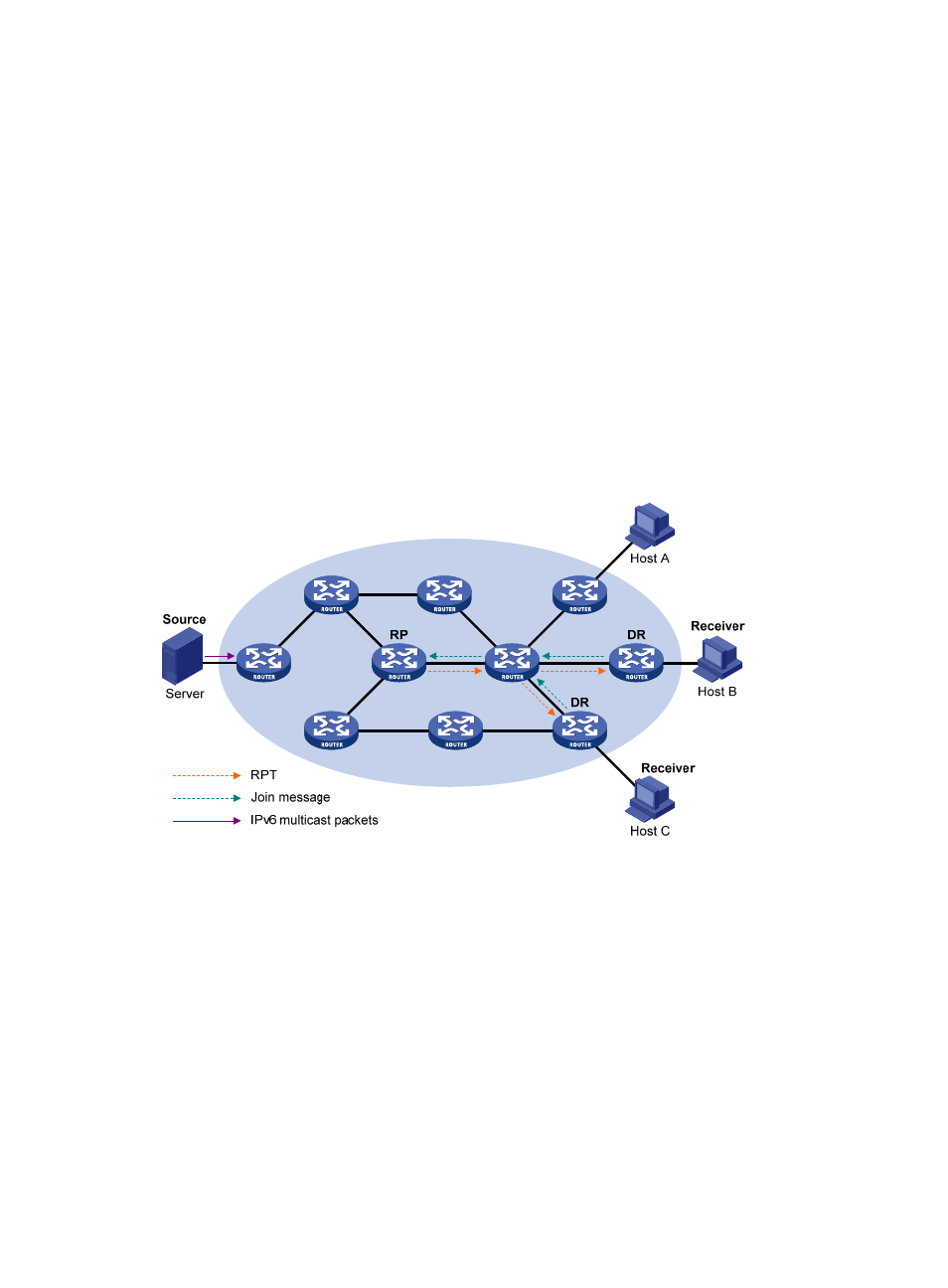Embedded rp, Rpt establishment – H3C Technologies H3C S10500 Series Switches User Manual
Page 377

362
Embedded RP
The embedded RP mechanism enables a router to resolve the RP address from an IPv6 multicast address
so that the IPv6 multicast group is mapped to an RP. This RP can take the place of the statically configured
RP or the RP dynamically calculated based on the BSR mechanism. The DR does not need to identify the
RP address beforehand. The specific process is as follows.
At the receiver side, the following occur:
1.
A receiver host initiates an MLD report to announce that it is joining an IPv6 multicast group.
2.
After receiving the MLD report, the receiver-side DR resolves the RP address embedded in the IPv6
multicast address and sends a join message to the RP.
At the IPv6 multicast source side, the following occur:
1.
The IPv6 multicast source sends IPv6 multicast traffic to the IPv6 multicast group.
2.
The source-side DR resolves the RP address embedded in the IPv6 multicast address, and sends a
register message to the RP.
RPT establishment
Figure 96 RPT establishment in an IPv6 PIM-SM domain
As shown in
, the process of building an RPT is as follows:
1.
When a receiver joins IPv6 multicast group G, it uses an MLD report message to inform the directly
connected DR.
2.
After getting the IPv6 multicast group G’s receiver information, the DR sends a join message, which
is forwarded hop by hop to the RP that corresponds to the multicast group.
3.
The routers along the path from the DR to the RP form an RPT branch. Each router on this branch
generates a (*, G) entry in its forwarding table. The asterisk means any IPv6 multicast source. The
RP is the root of the RPT, and the DRs are the leaves of the RPT.
The IPv6 multicast data addressed to the IPv6 multicast group G flows through the RP, reaches the
corresponding DR along the established RPT, and finally is delivered to the receiver.
When a receiver is no longer interested in the IPv6 multicast data addressed to a multicast group G, the
directly connected DR sends a prune message, which goes hop by hop along the RPT to the RP. After
receiving the prune message, the upstream node deletes the interface connected with this downstream
